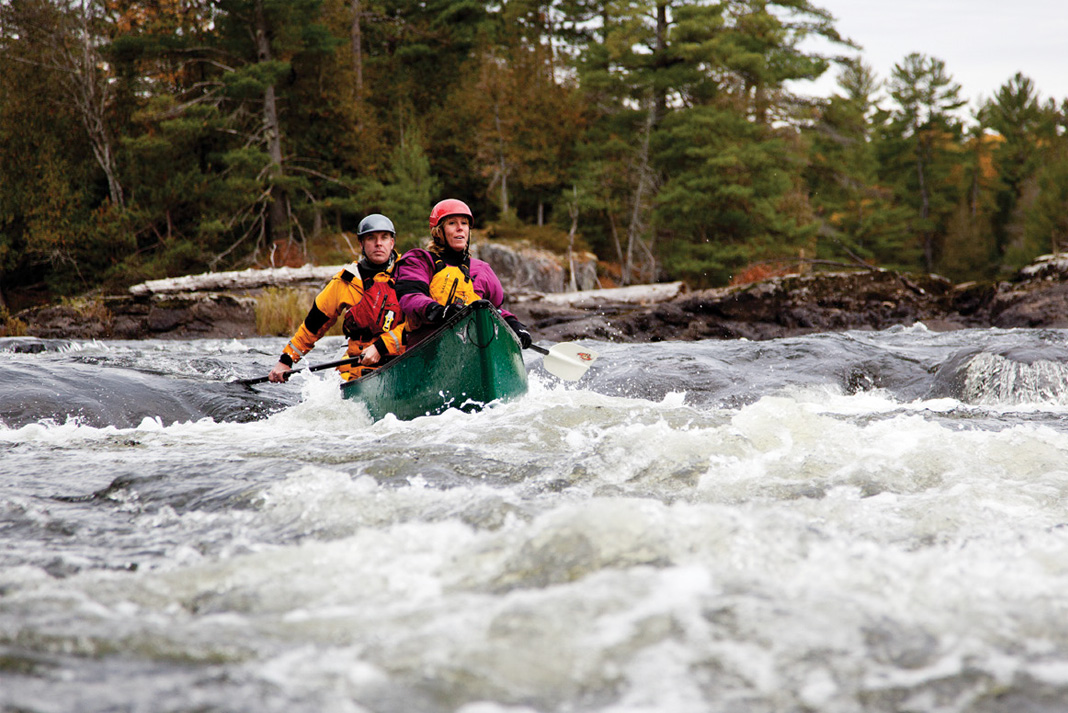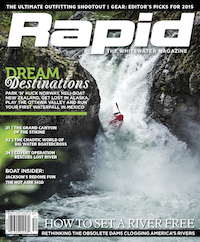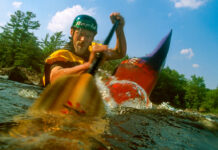In WATERWALKER, arguably the most influential paddling film of all time, Bill Mason paddled a cedar canvas canoe. In Deliverance, Burt Reynolds and Ned Beatty paddled the Chattooga River in aluminum Grummans. These two films are credited for creating the boom in popularity of whitewater canoeing in the ‘70s and ‘80s. Funny, neither of these films featured Royalex canoes.
When PolyOne, the international corporation that produced Royalex, announced it was ceasing production of the long-time canoe hull material, you couldn’t meet another paddler without discussing the seemingly dismal future of open boating and wilderness river tripping.
On the cover of Rapid’s sister publication, Canoeroots, we ran the headline, “The End of Canoeing As We Know It.” Who wouldn’t read the full story? And for the record, we didn’t say it was the end of canoeing, just the end of canoeing as we know it.
All winter I’ve been fielding phone calls from enthusiasts, outfitters and paddling schools asking if I’d paddled and wrapped any new canoe hull materials. My optimism about the current opportunity for innovation in the industry has most often been met with, “Yeah, but I’m not buying anything until I know I can wrap it.”
First of all, you can wrap anything. What paddlers really want to know is, after you drag it off the rocks, can you paddle it home?
In an inflight magazine, I recently read an advertisement for Toray Industries, the producer of “a super-charged plastic with embedded carbon fiber.” Toray was boasting about molding their magical material into airplanes and automobiles. In fact, the Boeing 787 Dreamliner’s fuselage and wings are all carbon fiber.
Nowhere in the ad did they talk about what happens when a carbon fiber 787 Dreamliner goes down. Why? Because, commercial airliners don’t go down very often. And, you know what, we don’t wrap canoes very often either. We really don’t.
In 23 years and hundreds and hundreds of river days, I haven’t wrapped one properly outfitted whitewater canoe—not a single one. Granted, livery businesses and outdoor education centers may have a much higher rate of destruction. So will canoes without proper float bags. But the rest of us may as well be enjoying lighter weight, nicer lines and greater performance offered by advanced materials.

THE LOSS OF ROYALEX IS NOT THE END OF WHITEWATER CANOEING
No one enthusiastic about mountain biking or road cycling is still riding a 30-year-old bike with a virtually indestructible steel frame. Carbon fiber is the future and it has been in cycling for years. Carbon bikes are stiffer, lighter and can be more methodically shaped.
Andy Convery of Echo Paddles spent his Easter weekend outfitting his first composite Ocoee, which he calls the Echoee (page 9). I’ve dreamed of a super stiff, 30-pound Ocoee for more than 20 years. Nova Craft Canoe is tossing 50-pound composite Prospectors off 10-story buildings and paddling them home. Esquif is working to produce a mate- rial sort of like Royalex, but lighter, stronger and more abrasion resistant. Thank you PolyOne for forcing us to kick our dependence on your out-of-date material.
Nobody was ever drawn to paddling rivers because they were excited about sheets of acrylonitrile butadiene styrene plastic sandwiching a foam core. The loss of Royalex is not the end of whitewater canoeing, just as the end of polyethylene pellets would not be the end of whitewater kayaking.
At the height of the fur trade, there wasn’t one Royalex canoe in the Hudson’s Bay catalog. We’ve been running whitewater since long before Royalex was invented, and we’ll be running whitewater long after the last Royalex canoe is bent in half, limped home and unloaded on Craigslist for $350.
Scott MacGregor is the founder and publisher of Rapid. He’s an avid solo open boater and whitewater canoe tripper. Although voted Mr. Optimistic in high school, when PolyOne announced the end of Royalex he bought spares of his favorite canoes, just in case.

Subscribe to Paddling Magazine and get 25 years of digital magazine archives including our legacy titles: Rapid, Adventure Kayak and Canoeroots.







